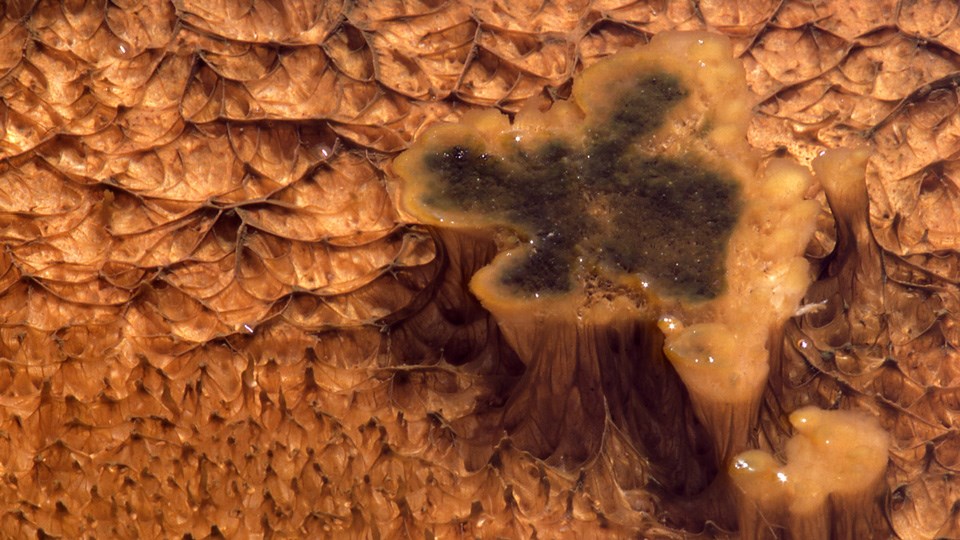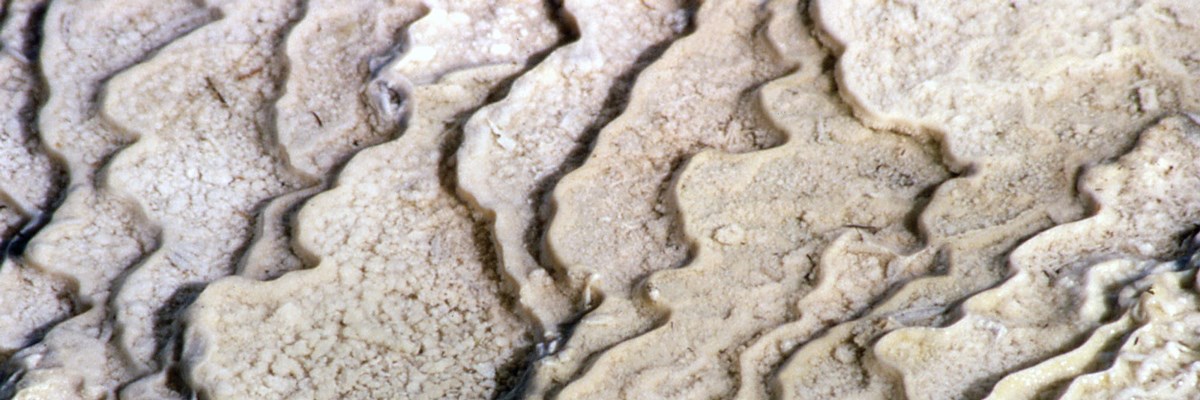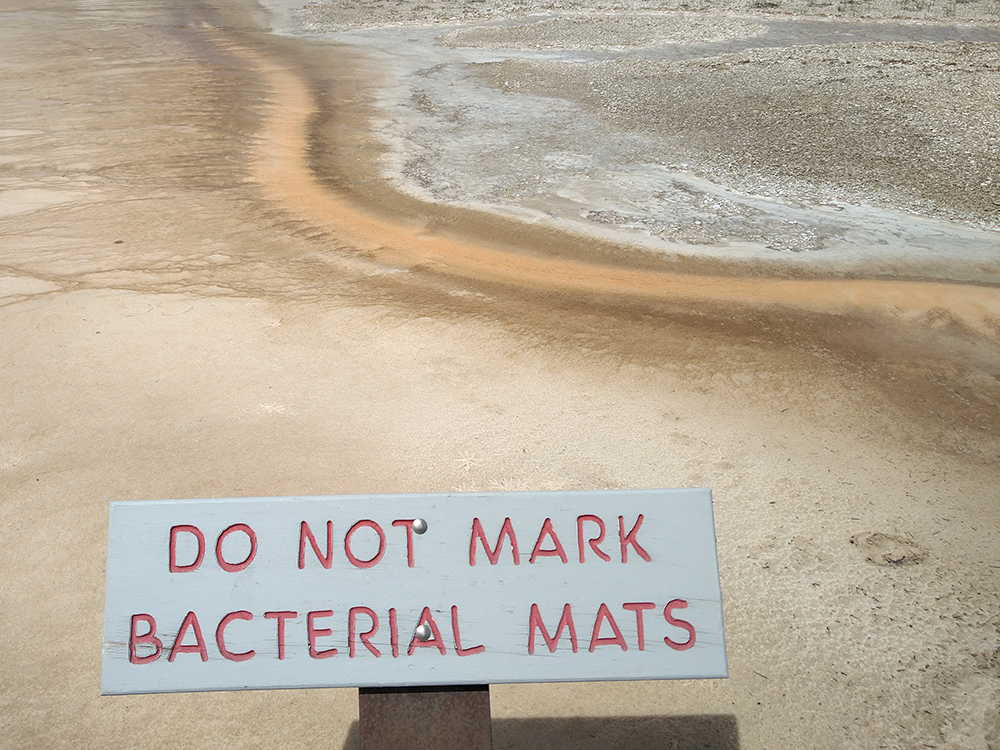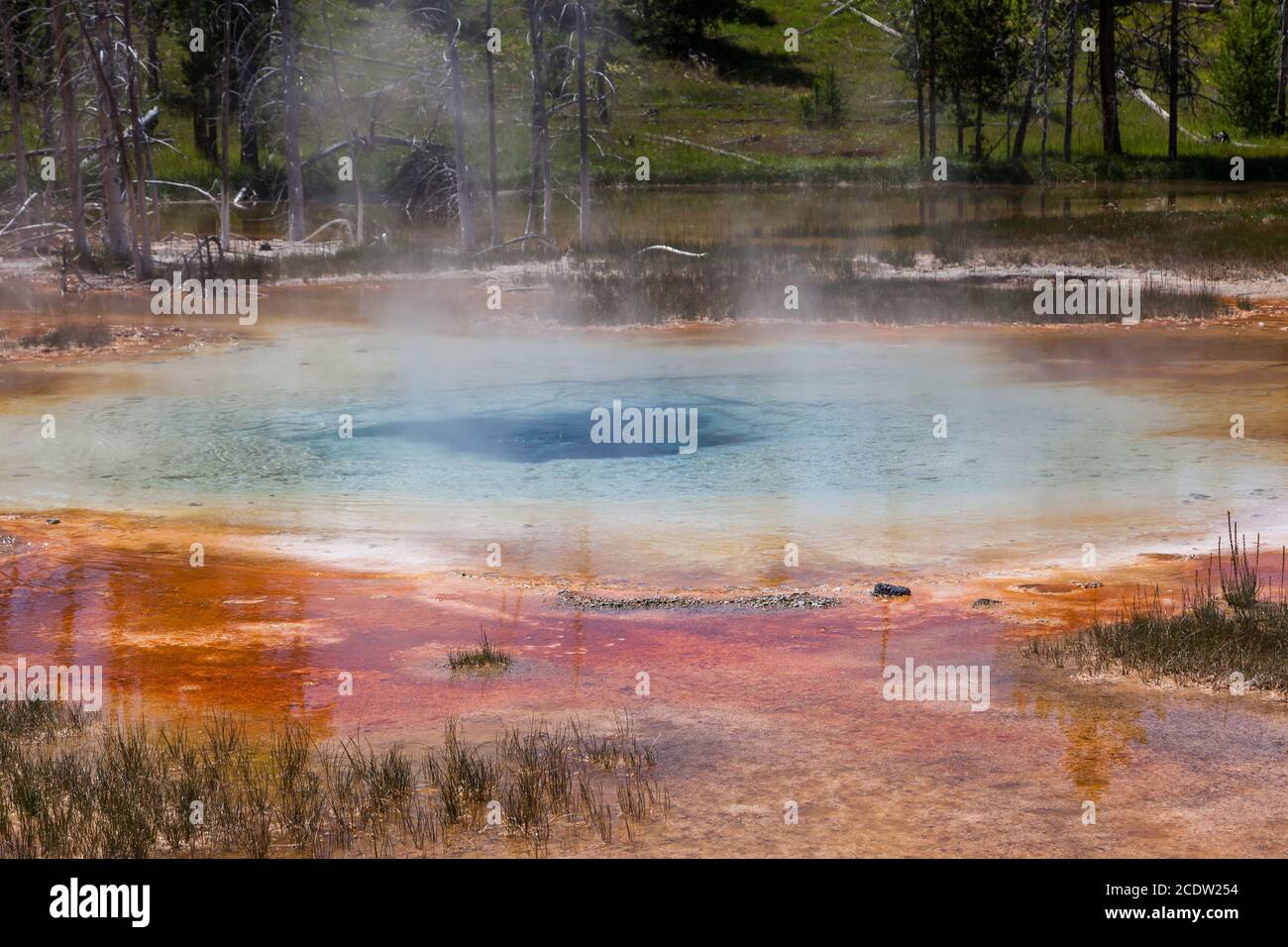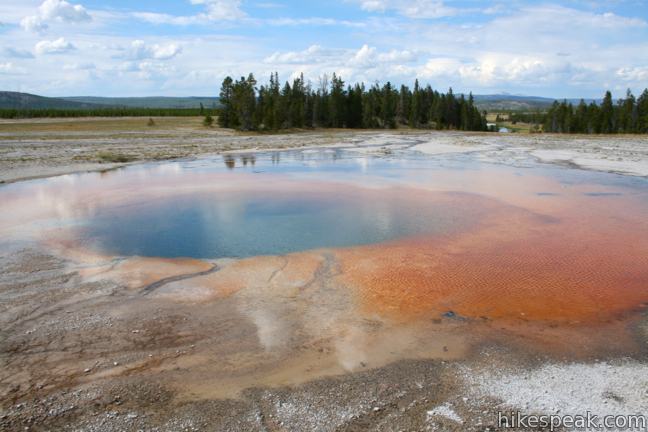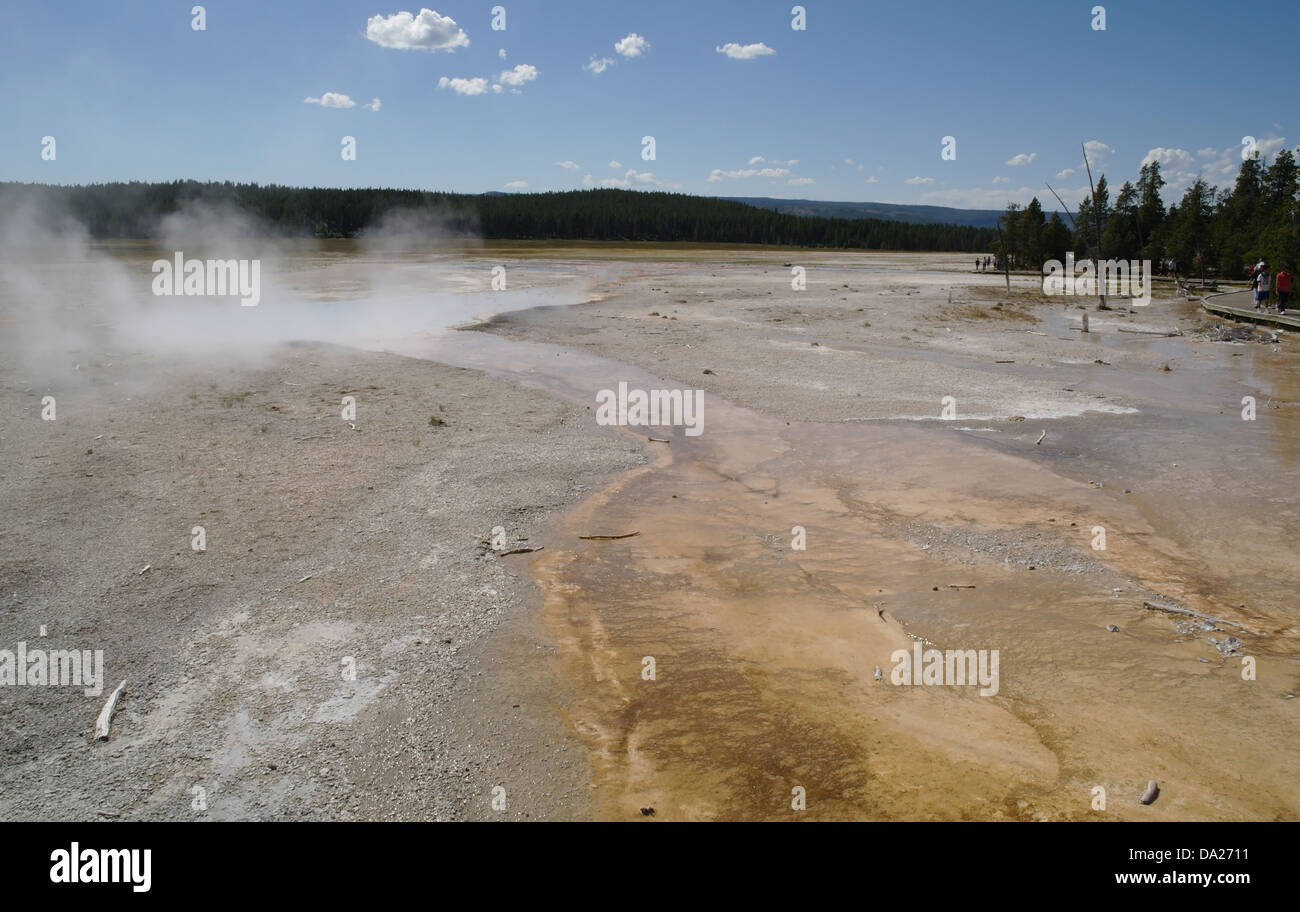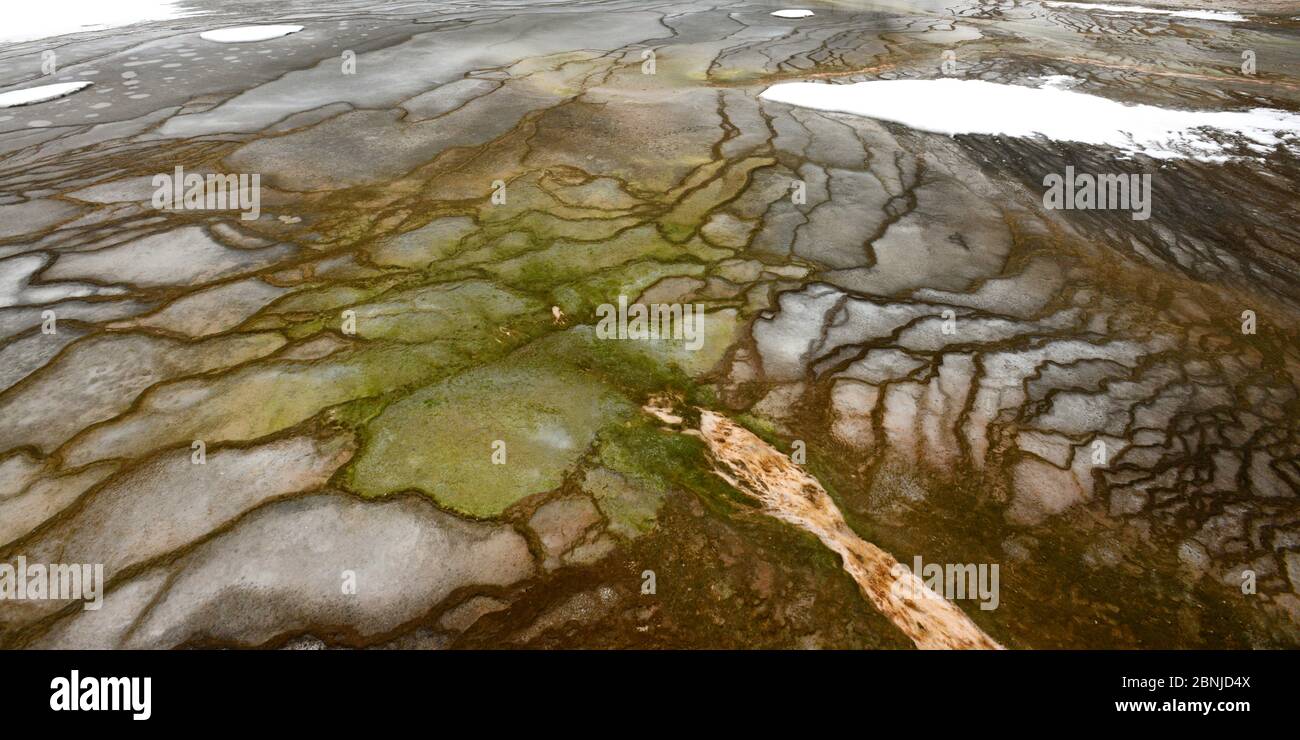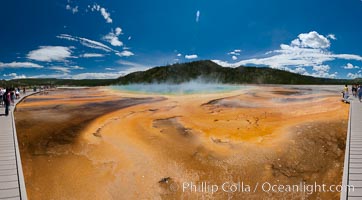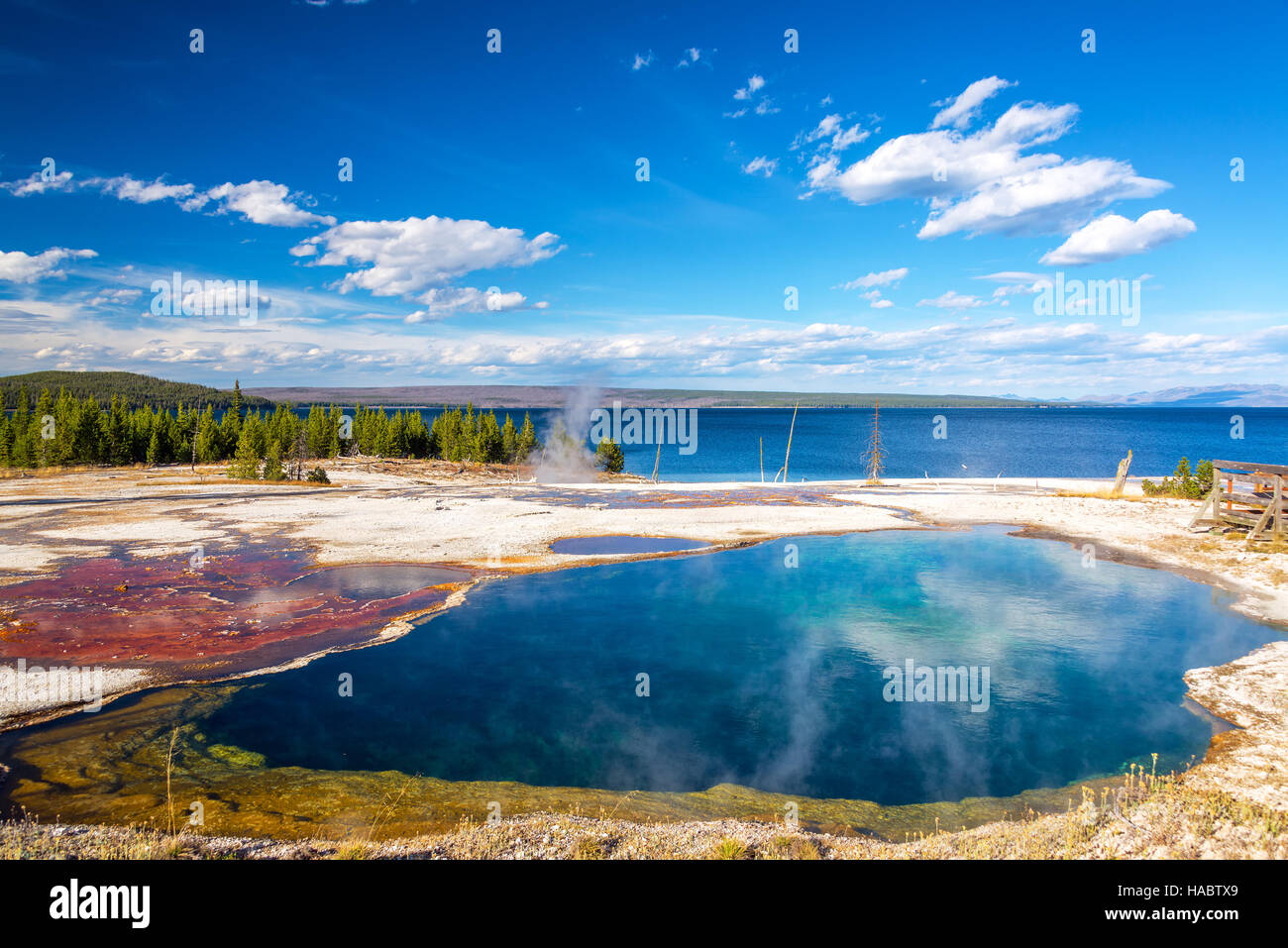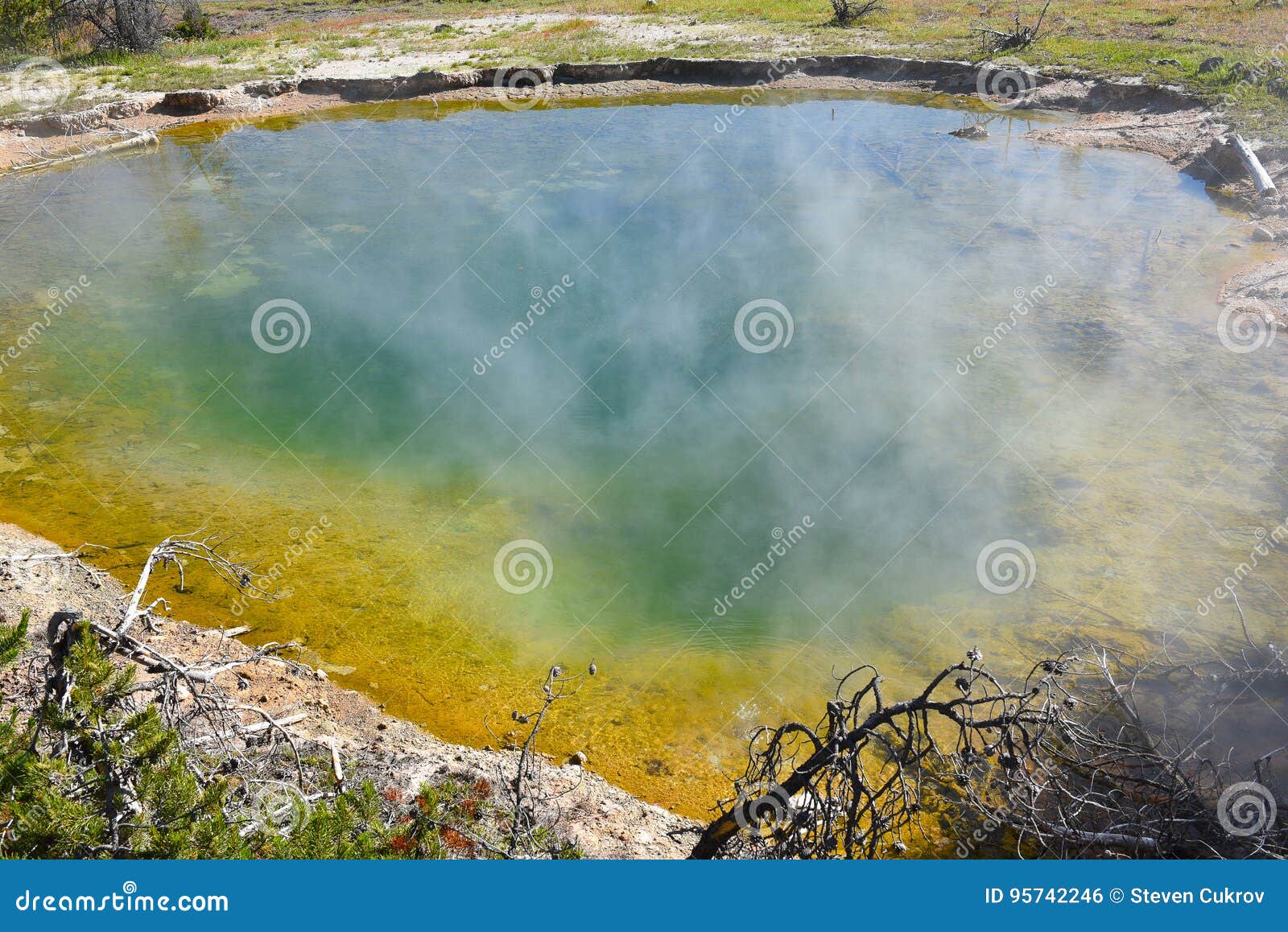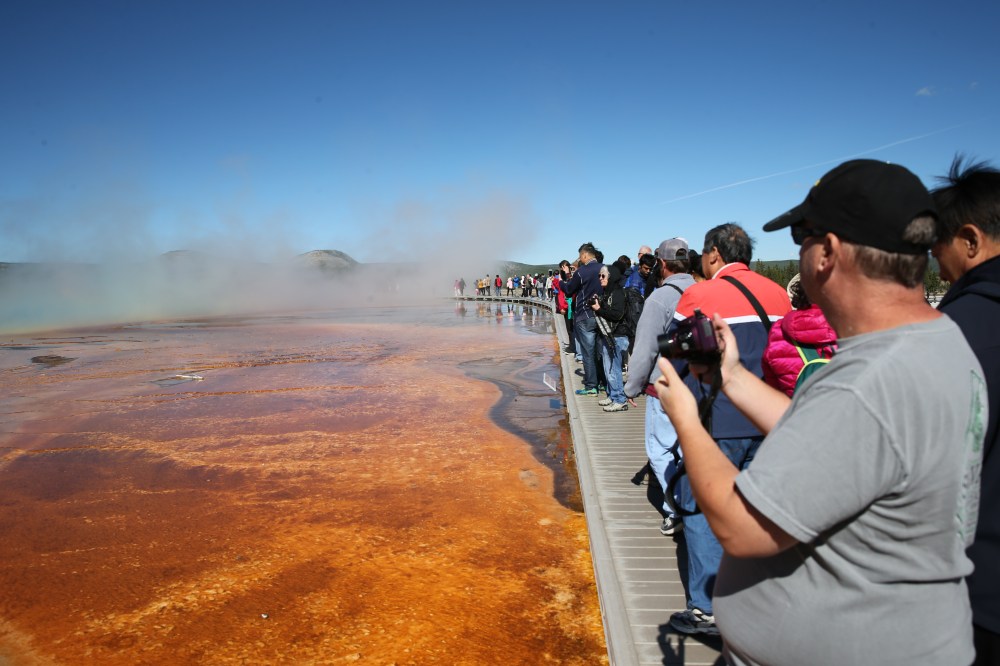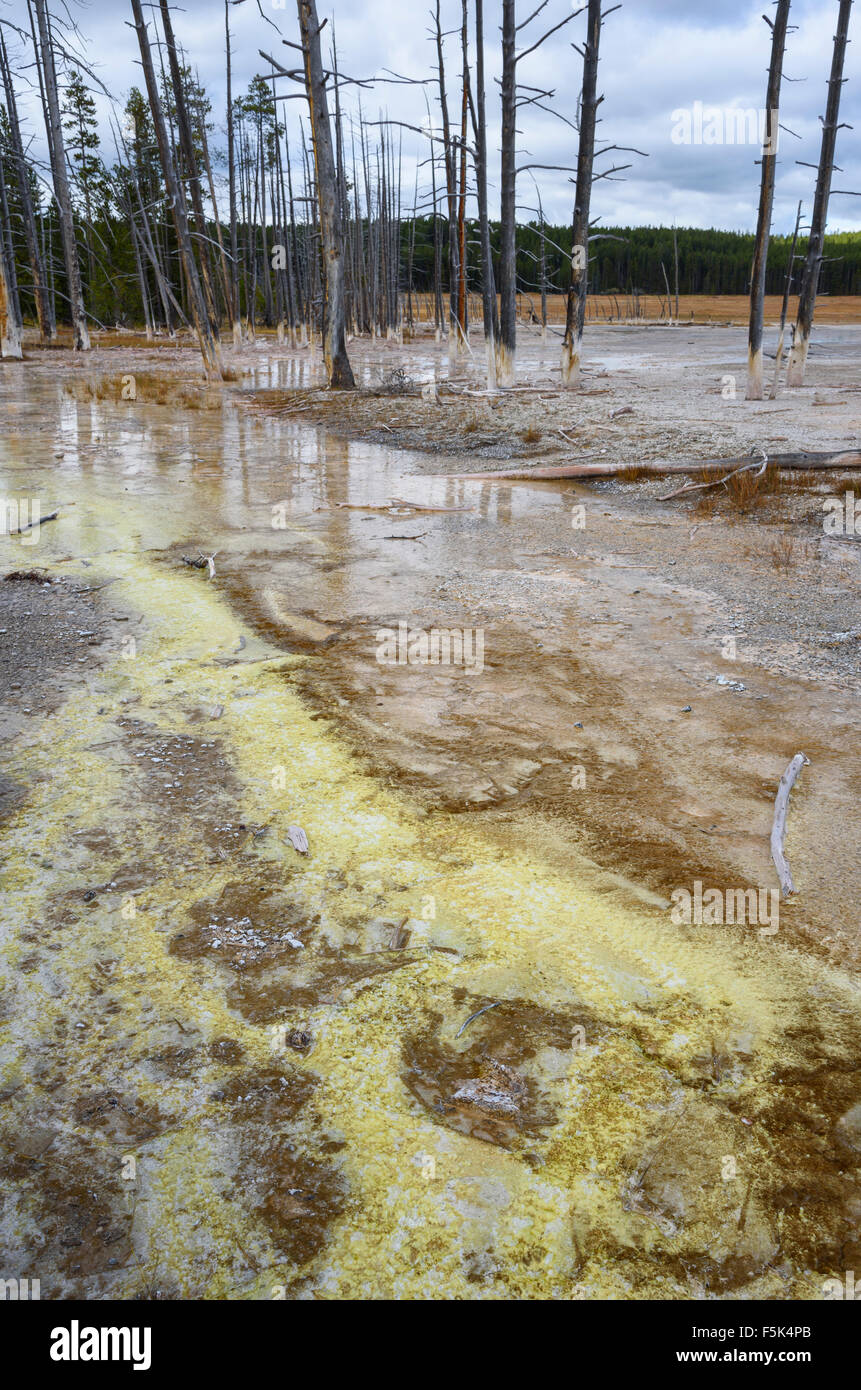Bacteria In Microbial Mats Of Lower Geyser Basin
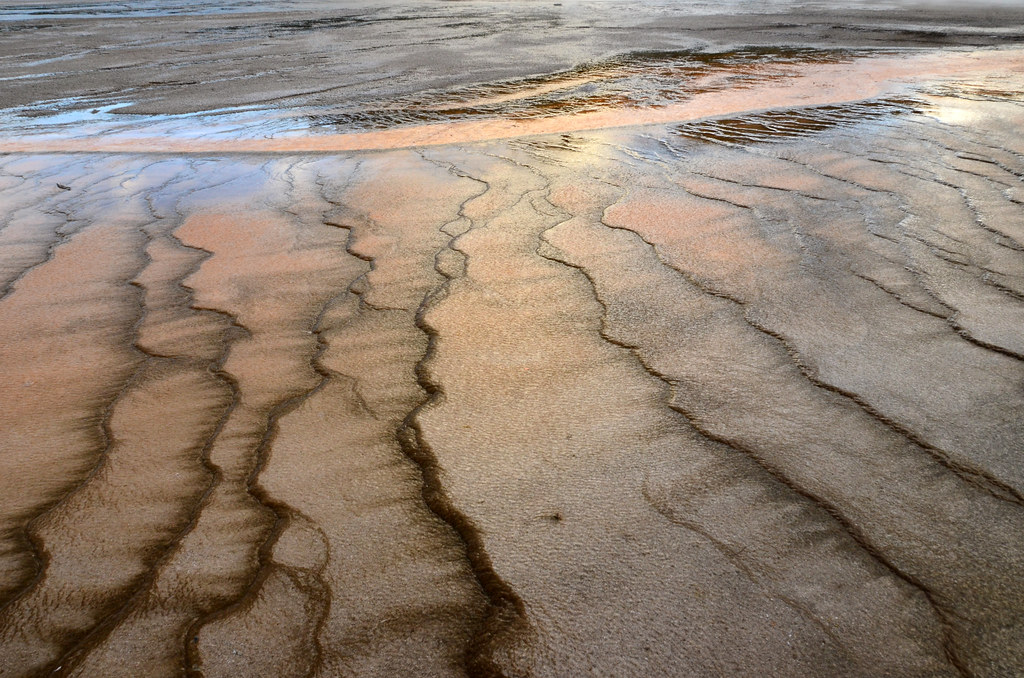
Cluster analysis of samples and anosim demonstrated.
Bacteria in microbial mats of lower geyser basin. Namely in the presence of photosynthetic bacteria and methanogens in the lower temperature springs and their absence in the 75 c spring. Mammoth hot springs as well as upper midway and lower geyser basins cyanobacteria phormidium. Dark brown mats metabolism. The lower geyser basin encompasses nearly 12 square miles with most of the thermal features widely scattered in small groups.
Some of the groups. These microbial mats have had extensive study and geometric and grid patterns in the mats are growth studies and extraction of lamination samples. The bacteria mat and silex spring are seen in the lower geyser basin of yellowstone national park in teton county wyoming usa on aug. The microbial mat in the 44 c spring generally 1 2 cm in thickness.
This photo shows steam rising from hot and sterile deep azure blue water in the center surrounded by huge mats of brilliant orange algae bacteria and archaea. Microbial mat communities in the effluent channels of octopus and mushroom springs within the lower geyser basin at yellowstone national park have been studied for nearly 50 years. Thermophilic bacteria in yellowstone national park cyanobacteria calothrix. Castle geyser reaches 60 to 90 feet in height and lasts 20 minutes.
Heart lake geyser basin and the 3 springs selected for analysis. Grand prismatic spring midway lower geyser basin yellowstone national park. Upper geyser basin yellowstone national park wyoming usa castle geyser erupts with the colorful bacteria mats of tortoise shell spring in the foreground. The heat loving water dweller thermus aquaticus was discovered by scientists in the lower geyser basin in 1966.
See 566 traveler reviews 752 candid photos and great deals for yellowstone national park wy at tripadvisor. The emphasis has mostly focused on the chlorophototrophic bacterial organisms of the phyla cyanobacteria and chloroflexi. These colorful microorganisms are called extremophiles these in particular are thermophiles. Microbial mats are structures visible to the naked eye with the thickness ranging from millimeters to several centimeters and are formed by multiple biofilms of microorganisms embedded in a matrix of exopolysaccharides in a vertical fashion due to the physical gradients one of the main factors of biological diversity in microbial mats is attributed to its dynamic physiochemical gradients.
Feeds the extensive and colorful microbial mats.






